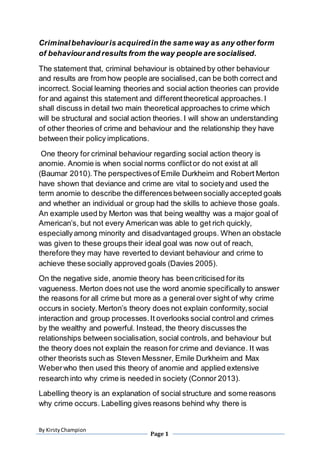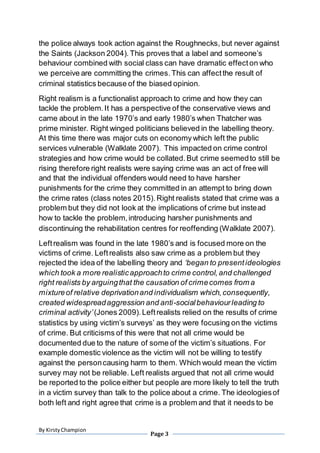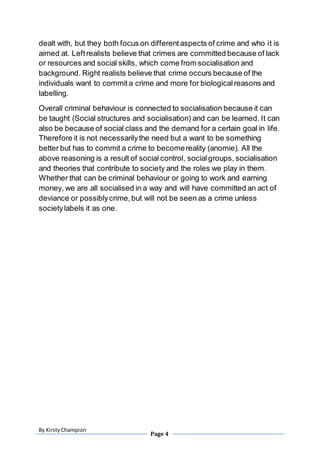This document discusses several theories of criminal behavior and how it relates to socialization. It examines anomie theory, which suggests that crime can result when there is a disconnect between socially accepted goals and the means to achieve them. Labelling theory holds that acts only become deviant when labeled as such by others. The author also reviews right realism, which views crime as a matter of free will and advocates for harsher punishments, and left realism, which focuses more on victims and sees crime stemming from lack of resources and social skills due to one's background. Overall, the document argues that criminal behavior is linked to socialization through social structures, learning from others, social class influences, and societies' labeling of certain acts





